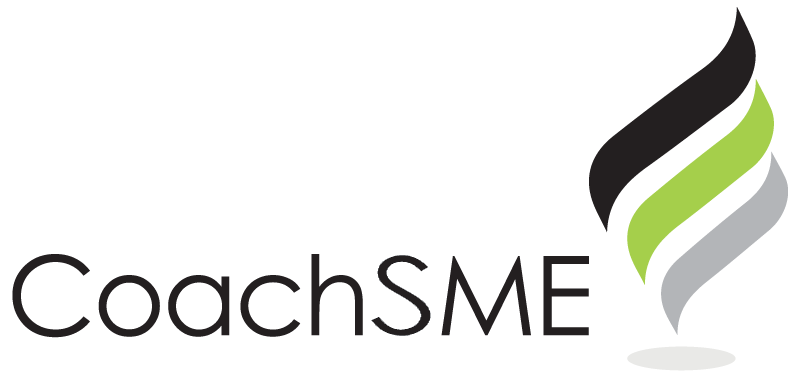 Book a 30 Minute
Book a 30 MinuteIntroduction Meeting

|
Getting your Trinity Audio player ready...
|
Welcome to Part Two of 'Good Questioning Leads to Great Sales'.
Part one of this guest blog from Steve Jessop has prompted lots of discussion. Prepare to learn some more from an insider's view of 'Where The Rubber Hits The Road'....
In part one we concentrated on key areas of sales preparation - with the aim of building a real appreciation of what is happening on the customer's side of the desk. Now we turn our attention to how we can capitalise on this as the dialogue progresses ahead of the presentation.
Solutions and problems
Revelation of the day: we just love talking about our products & services don’t we? After all, it’s what we know. It’s where we’re comfortable. It’s much easier to prattle on about how wonderful our products are than to appear ‘impolite’ by asking probing, incisive questions about the customer and his business to identify important issues which our solution is supposed to address!
Also, while we’re ‘in the seat’, so to speak, the pressure is on us. The customer doesn’t have to acknowledge too many gaps and problems -- he can just sit back and watch the show…!!
Once the preparation is complete, your ability to provide a solution is only as good as your ability to identify the problem. And it often takes courage to ask the questions, which identify the problem.
It has been said that there are 2 reasons for making decisions:
The motivation to get away from pain is normally more immediate than the motivation to pursue gain. The comments the customer makes will indicate which of these is appropriate. Those under the first heading will talk about problems and frustrations with varying degrees of emphasis. Those in the second camp will be more inclined to emphasise the result or outcome they seek.
You should listen carefully to the answers to your questions to begin to understand the real nature of the problem. The basis of these questions was covered in part one of this article. Beyond this, there are two key pitfalls to avoid
Conspicuous by its absence - the most common missing link
In a word it is quantification. We have found that too few salespeople are able and willing to quantify the gaps which their questions flush out. Typically, the customer’s throw-away line is not challenged. Here are a couple of examples:
Tangible benefits will be required if you are to present a compelling value-added solution further downstream. Incisive questions that zero-in on quantifiable problems and pressures are the real key to this.
You don’t know what the benefits are until you’ve had the discussion.
Most of us were, correctly, taught very early on that we sell benefits – not features. “The customer buys what it can do for him, not what it is” – I can still hear my first sales manager saying it! Too many people however confuse benefits with advantages.
Keep in mind that the feature and its advantage will only become beneficial when the customer perceives how it will meet his need – and you will only ascertain this from your questions. So, when preparing your sales propositions you will be analysing your likely deliverables but not the benefits. These will only become apparent to you and the customer when you are asking questions and he is answering them.
To pick a simple example: the fountain pen has a clip on it [feature], which allows it to be fastened onto shirt or jacket pockets [advantage], this will not be of benefit to me because I don’t keep pens in my jacket and I don’t wear business shirts with pockets on the front of them.
At the point of interface
Here are some key interpersonal considerations when you are asking questions of your customer.
Earning trust
Have you heard of the ‘Trust Alarm’? It is based on a place on the brain stem called the Amygdala which is the brain’s survival mechanism . Quite literally, when the question arrives, the Amygdala helps to decide whether or not it’s safe! The question is only routed further to the part of the brain which thinks and feels if the ‘Trust Alarm’ believes the question to be in the customer’s best interests. In the early stages of the meeting in particular, you must ensure that your customer understands the purpose of your questions and, especially, why he should answer them.
…. hence, The ‘Motivator’...
We use this word to describe how we should give the customer a reason to answer the questions we are about to ask. Two examples:
Listen, make notes and summarise en route.
‘How to listen’ ought to be a subject taught in schools. Actively listen as if your life depends on it. In a way it does! Listen to what your customer says, how he says it and what lies underneath what is said. Don’t be afraid to challenge what doesn’t appear to add up, or what you sense might block progress further downstream.
Unless you have a photographic memory, don’t be shy about making notes. It shows interest and ensures that you can summarise accurately en route. And, on the subject of summarising, you almost can’t summarise too often. It demonstrates understanding and the fact that you’ve been listening, and, unless you are hideously and consistently off-track, allows the customer to occasionally re-interpret on your behalf without any loss of face on your part. A comprehensive summary of all of your customer’s needs and wants should always precede the presentation of your solution.
Golden rule: Do not progress to ‘presentation mode’ until the customer has confirmed that your summary is accurate.
In my view, selling is still a misunderstood and under-valued profession. Whether or not we choose to acknowledge it, most of us sell for much of the time; inside and outside of the working environment regardless of the ‘badge’ we wear. As you can see, the preparation and execution of good quality questions is central to effective selling.
Steve Jessop is the co-founder of b2b sector sales improvement consultancy, Quantum (www.quantum-sales.com). He also acts as a private sales advisor for several SME sector businesses.
You can contact Steve Jessop by email at steve@spguk.co.uk , by mobile on+447973 909648, or follow him on Twitter @StevenJessop1

1. Follow me on X / LinkedIn and let me know the business challenges keeping you awake at night that you want to solve. Click here to email. Connect with me, The Business Planning Coach on Facebook and Instagram.
2. Grab a copy of my book The Grown-Up Business (paperback and Kindle). Get the tools and inspiration you need to go to the next level of wealth.
3. Work with me on your growth business to overcome the blockages, hurdles & problems that are holding you back. Join the community, email me with Let’s Get Started in the subject line or book a 30 Discovery Meeting using Calendly
“If you run a business, then buy this book. Not tomorrow, today!”
~ Sam Carpenter Work The System
Tel: 07885 197 364
Email: shirley.mansfield@coachsme.co.uk
© 2024 CoachSME and Shirley Mansfield